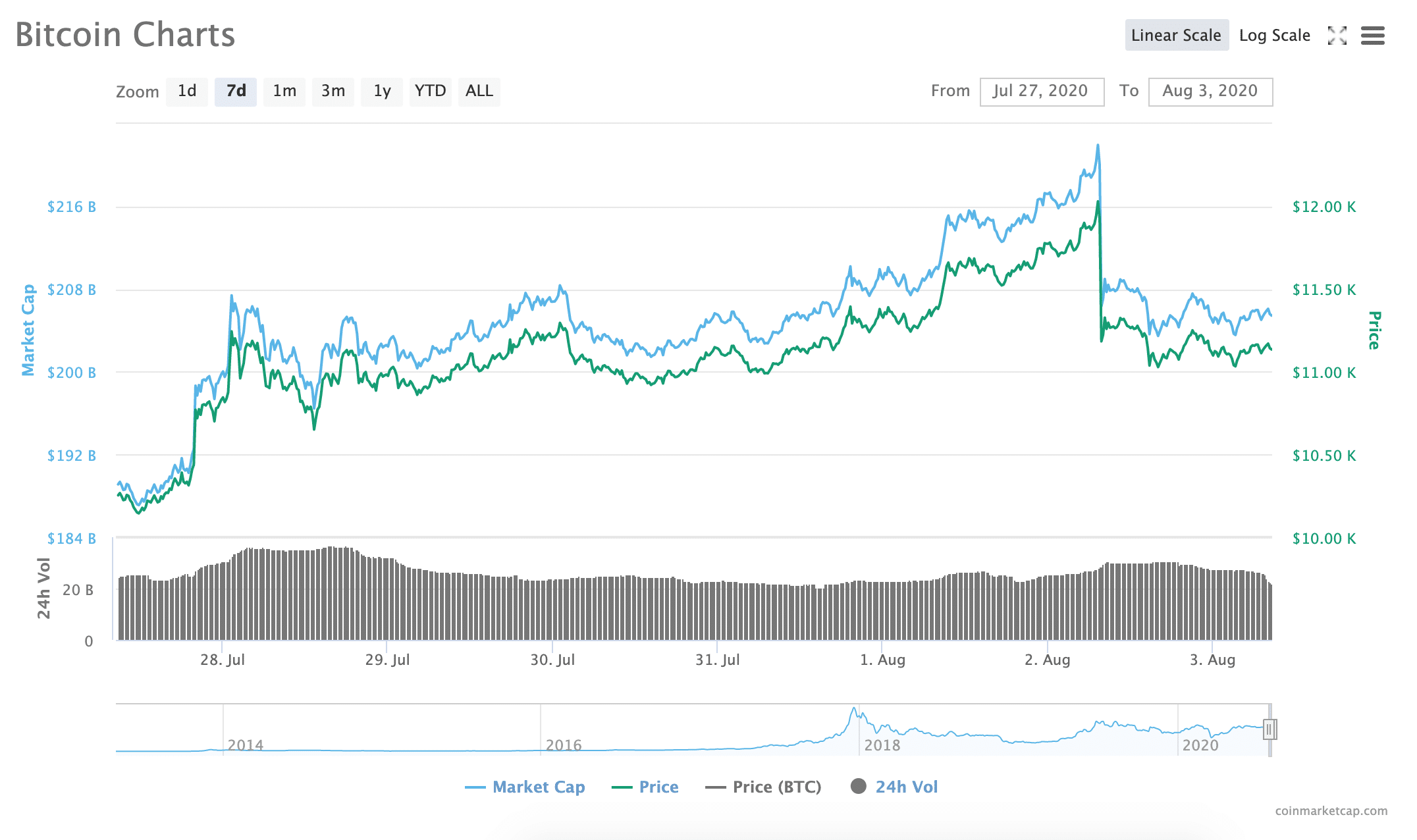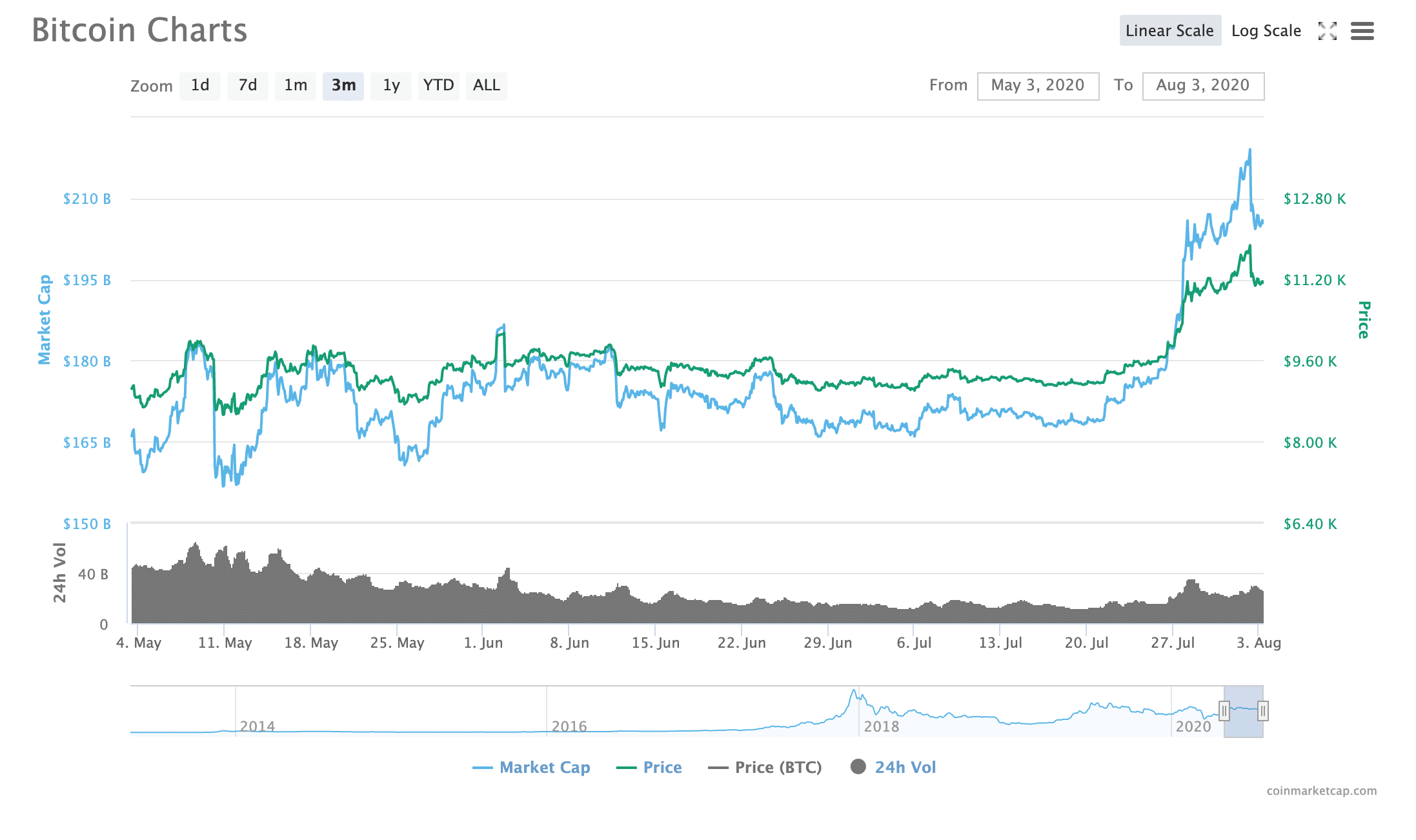After months of price stagnation, it seems that Bitcoin ’s famous Volatility could be making a big comeback.
Over the course of last week, Bitcoin finally broke through the $8,800 to $9,800 band that it had been stuck in for much of May, June, and July. At first, BTC hit $11,000, and then pushed past $12,000.
However, this push appeared to trigger a massive selloff; consequently, the price crashed back down to around $11k almost immediately. There are some data sources that show the price crashed to as low as $10,500. Fortunately, at press time, the price appeared to have stabilized at around $11,135.

Specifically, data form Bybt showed that the sudden price drop liquidated 72,422 positions, worth roughly $1.4 billion across a number of major exchanges. Additionally, as reported by CoinDesk, data from Skew shows that the price drop caused $144 million in sell liquidations and forced closure of long positions on BitMEX.
Bitcoin’s Previous Runs past $10k Have Been Followed by Significant Price Crashes
The bull run up to $12k and the subsequent crash seem to be part of an ongoing pattern of upward motion flowing past $10k followed by a crash.
Twitter user @CryptoWhale pointed out that Bitcoin “has only held above $10,000 two times in history. Both times were followed by a 70-80% crash.”
https://twitter.com/CryptoWhale/status/1288090731459092480
Still, the recent upward Bitcoin price movement appears to have re-energized traders in BTC markets. According to data from CoinMarketCap, Bitcoin's 24-hour trading volume has been fluctuating between $21 billion and $36.5 billion every day since Sunday, July 26th. Though previously, BTC’s trading volume had wavered between $15 and $16 billion for weeks.
Additionally, BTC’s market cap has grown and shrunk, which is almost directly parallel to its price. When the price reached $12,000, its market cap was roughly $220 billion. At press time, when BTC dropped to $11.1k, its market cap was $205 billion. Though, previous to its bull run past $11,000, BTC’s market cap sat between $160 billion and $180 billion.


















